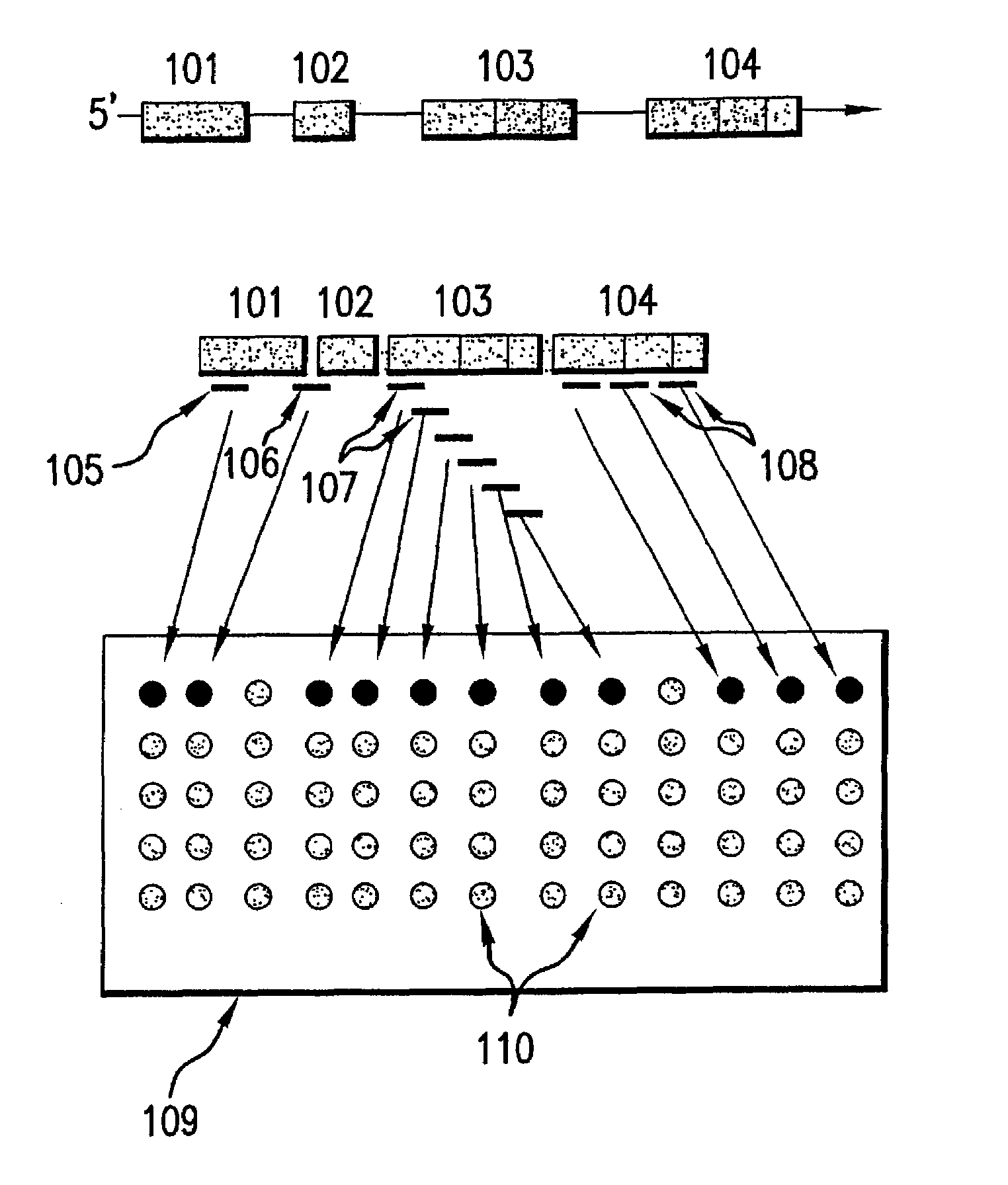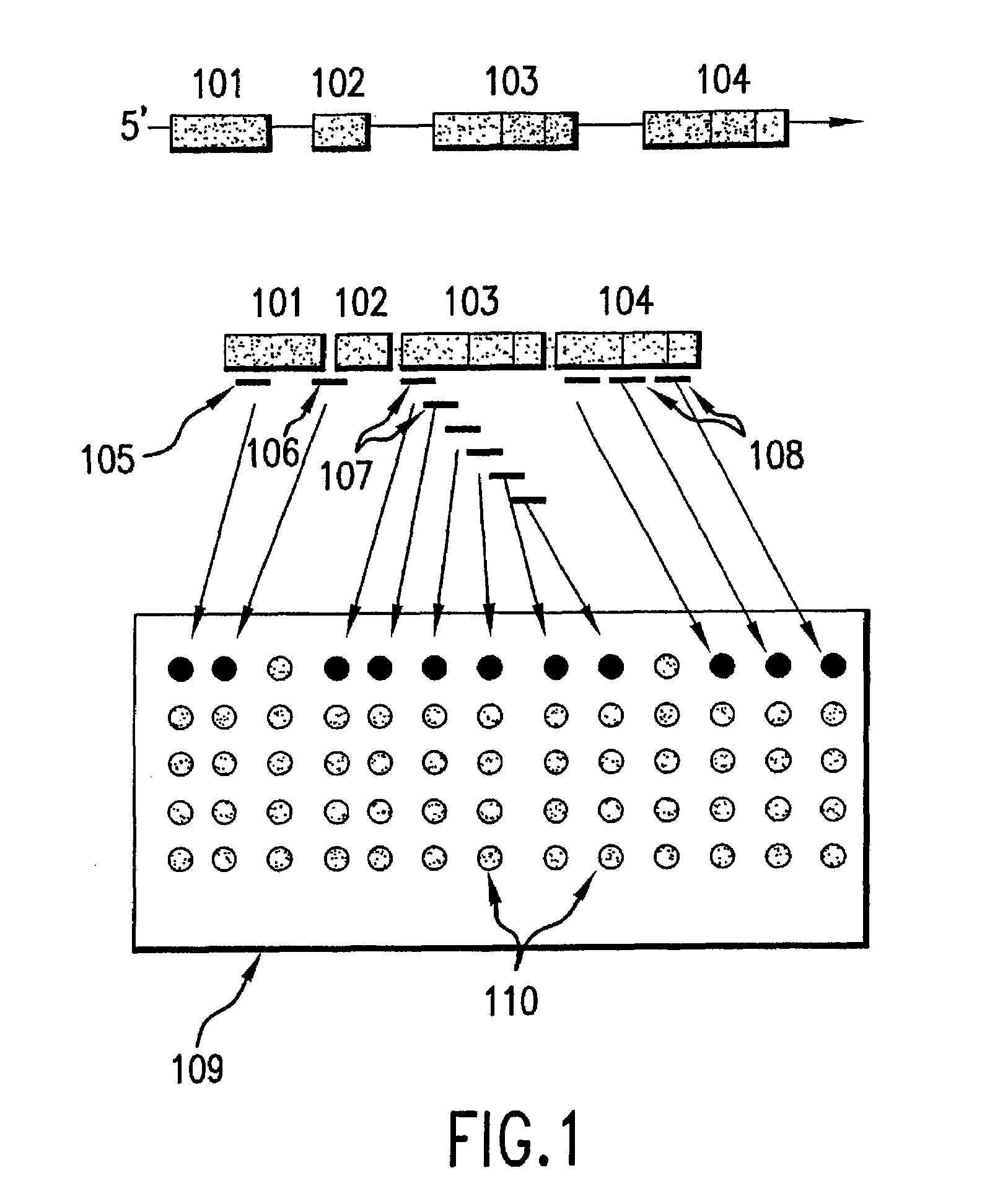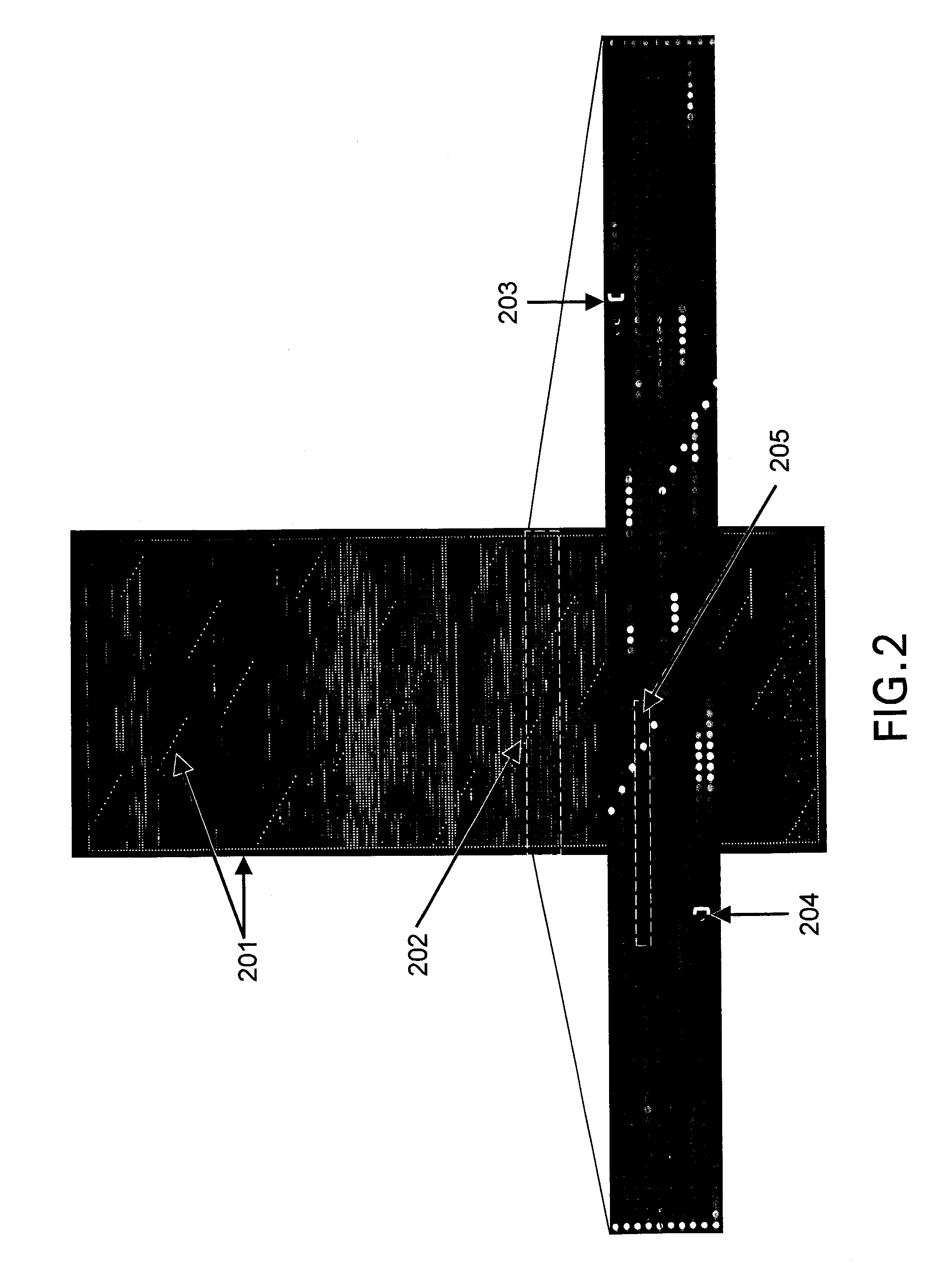Compositions and methods for exon profiling
a technology of exon expression and composition, applied in the field of analysis of exon expression profiles, can solve the problems of inconvenient tedious and laborious methods, and methods such as methods using northern blotting and dna sequencing, and achieve the effect of not being suitable for analysis of the expression of exons in a plurality of genes
- Summary
- Abstract
- Description
- Claims
- Application Information
AI Technical Summary
Benefits of technology
Problems solved by technology
Method used
Image
Examples
example 1
6.1. Example 1
Alternative Splicing of the Annexin VII Gene
[0193]Annexin VII gene is a member of the annexin family of calcium-dependent phospholipid binding proteins that contains 14 exons which are distributed over 34 kb of genomic DNA on human chromosome 10 (Burns et al., 1989, Proc. Natl. Acad. Sci. U.S.A. 85:3798-3802). An alternatively spliced exon results in two mRNA transcripts of 2.0 kb and 2.4 kb, respectively, which have been shown to generate two protein isoforms differing in their N-terminal domain (Shirvan et al., 1994, Biochemistry, 33: 6888-6901). The alternative splicing event is tissue specific; the long form of the mRNA is prevalent in brain, heart and skeletal muscle while the short form is present in lung and smooth muscle (Magendzo et al., 1991, The Journal of Biological Chemistry, 266:3228-3232). In the long transcript all 14 exons are present while in the short transcript the 6th exon that encodes a unique 22 amino acids insert in the N-terminus of the protein...
example 2
6.2. Example 2
Exon Expression State of Human Chromosome 22
[0197]The complete sequence of human chromosome 22 has recently been determined (Nature 1999 Dec. 2; 402(6761):489-95). The chromosome spans 33.4 megabases and contains at least 545 genes and 134 pseudogenes. In addition, a total of 8,183 exons have been identified or predicted using a variety of gene prediction algorithms and experimental strategies and are available from http: / / sanger.ac.uk.
[0198]To monitor the exon expression state of chromosome 22, a DNA array comprising 60-mer probes for the 8,183 exons was designed and produced. For most exons, two 60-mer probes were designed using an algorithm that takes into account binding energies, base composition, sequence complexity, cross-hybridization binding energies, and secondary structure (see, Friend et al., U.S. patent application Ser. No. 09 / 561,487, filed Apr. 28, 2000; International Application No. PCT / US00 / 10202, filed Jul. 14, 2000). In some cases, e.g. exons shorter...
example 3
6.3. Example 3
Whole Human Genome Exon Arrays and Whole Human Genome Exon Scan
[0201]Whole human genome exon arrays were designed based on a non-redundant subset of the 628,635 sequence elements that had been identified as potential exons by the Genscan program (Hubbard et al., 2000, Nature 403, 825) in the Jun. 15, 2000 version of the Ensembl human genome annotation data set (http: / / ensembl.org / ). This subset consisted of 554,202 sequences. The subset is further reduced by repeat masking to a set of 442,785 sequences. For each of the predicted exons, the top two 60-mers were selected using the algorithm as described supra. In some cases (e.g. exons shorter than 60 bases), it was only possible to select a single 60 mer probe per exon. A set of 50 arrays containing a total of 1,090,408 60 mer polynucleotide probes representing such 442,785 exons was designed and fabricated. Among the subset of exons, 88,374 exons are confirmed exons. For 78,486 of the confirmed exons representing 17,99...
PUM
| Property | Measurement | Unit |
|---|---|---|
| length | aaaaa | aaaaa |
| mean melting temperature | aaaaa | aaaaa |
| mean melting temperature | aaaaa | aaaaa |
Abstract
Description
Claims
Application Information
 Login to View More
Login to View More - R&D
- Intellectual Property
- Life Sciences
- Materials
- Tech Scout
- Unparalleled Data Quality
- Higher Quality Content
- 60% Fewer Hallucinations
Browse by: Latest US Patents, China's latest patents, Technical Efficacy Thesaurus, Application Domain, Technology Topic, Popular Technical Reports.
© 2025 PatSnap. All rights reserved.Legal|Privacy policy|Modern Slavery Act Transparency Statement|Sitemap|About US| Contact US: help@patsnap.com



